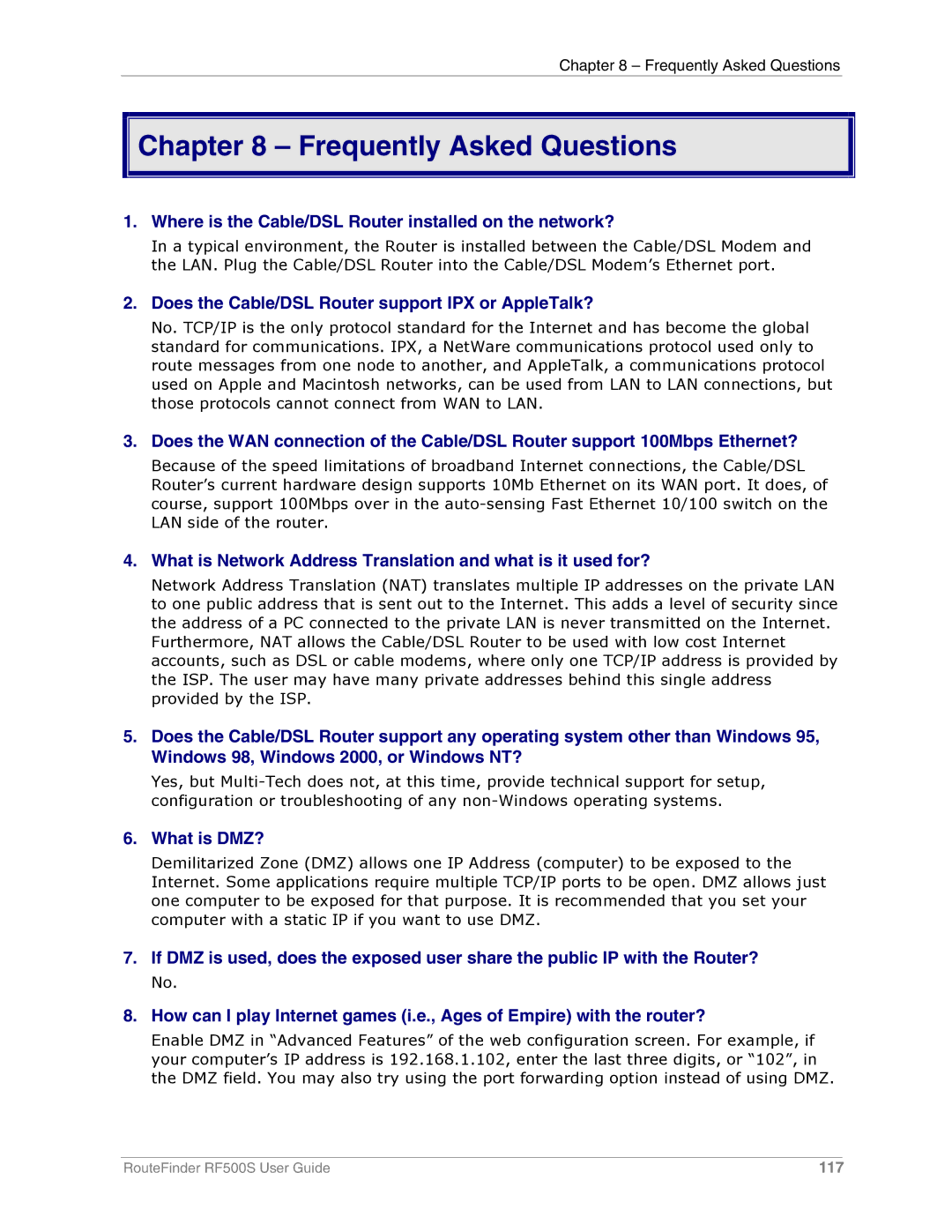
Chapter 8 – Frequently Asked Questions

 Chapter 8 – Frequently Asked Questions
Chapter 8 – Frequently Asked Questions
1.Where is the Cable/DSL Router installed on the network?
In a typical environment, the Router is installed between the Cable/DSL Modem and the LAN. Plug the Cable/DSL Router into the Cable/DSL Modem’s Ethernet port.
2.Does the Cable/DSL Router support IPX or AppleTalk?
No. TCP/IP is the only protocol standard for the Internet and has become the global standard for communications. IPX, a NetWare communications protocol used only to route messages from one node to another, and AppleTalk, a communications protocol used on Apple and Macintosh networks, can be used from LAN to LAN connections, but those protocols cannot connect from WAN to LAN.
3.Does the WAN connection of the Cable/DSL Router support 100Mbps Ethernet?
Because of the speed limitations of broadband Internet connections, the Cable/DSL Router’s current hardware design supports 10Mb Ethernet on its WAN port. It does, of course, support 100Mbps over in the
4.What is Network Address Translation and what is it used for?
Network Address Translation (NAT) translates multiple IP addresses on the private LAN to one public address that is sent out to the Internet. This adds a level of security since the address of a PC connected to the private LAN is never transmitted on the Internet. Furthermore, NAT allows the Cable/DSL Router to be used with low cost Internet accounts, such as DSL or cable modems, where only one TCP/IP address is provided by the ISP. The user may have many private addresses behind this single address provided by the ISP.
5.Does the Cable/DSL Router support any operating system other than Windows 95, Windows 98, Windows 2000, or Windows NT?
Yes, but
6.What is DMZ?
Demilitarized Zone (DMZ) allows one IP Address (computer) to be exposed to the Internet. Some applications require multiple TCP/IP ports to be open. DMZ allows just one computer to be exposed for that purpose. It is recommended that you set your computer with a static IP if you want to use DMZ.
7.If DMZ is used, does the exposed user share the public IP with the Router?
No.
8.How can I play Internet games (i.e., Ages of Empire) with the router?
Enable DMZ in “Advanced Features” of the web configuration screen. For example, if your computer’s IP address is 192.168.1.102, enter the last three digits, or “102”, in the DMZ field. You may also try using the port forwarding option instead of using DMZ.
RouteFinder RF500S User Guide | 117 |
